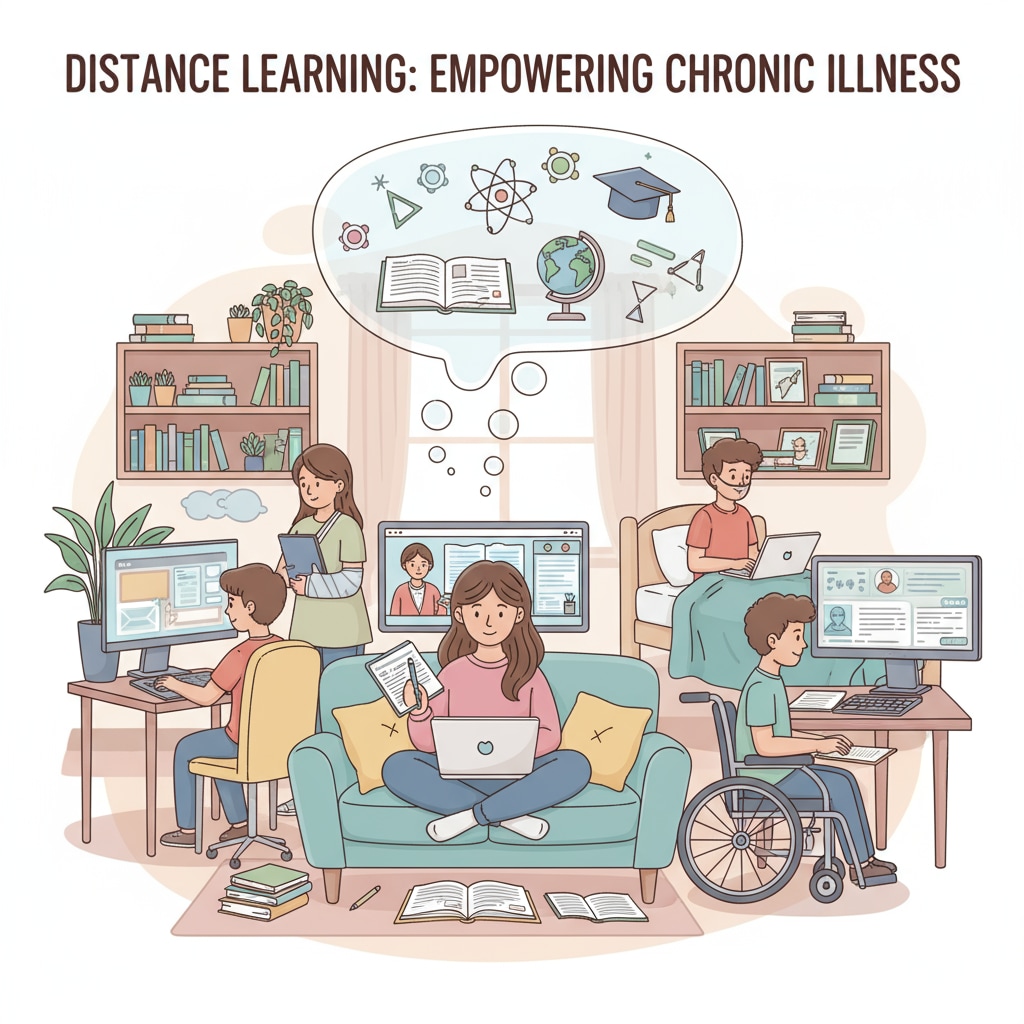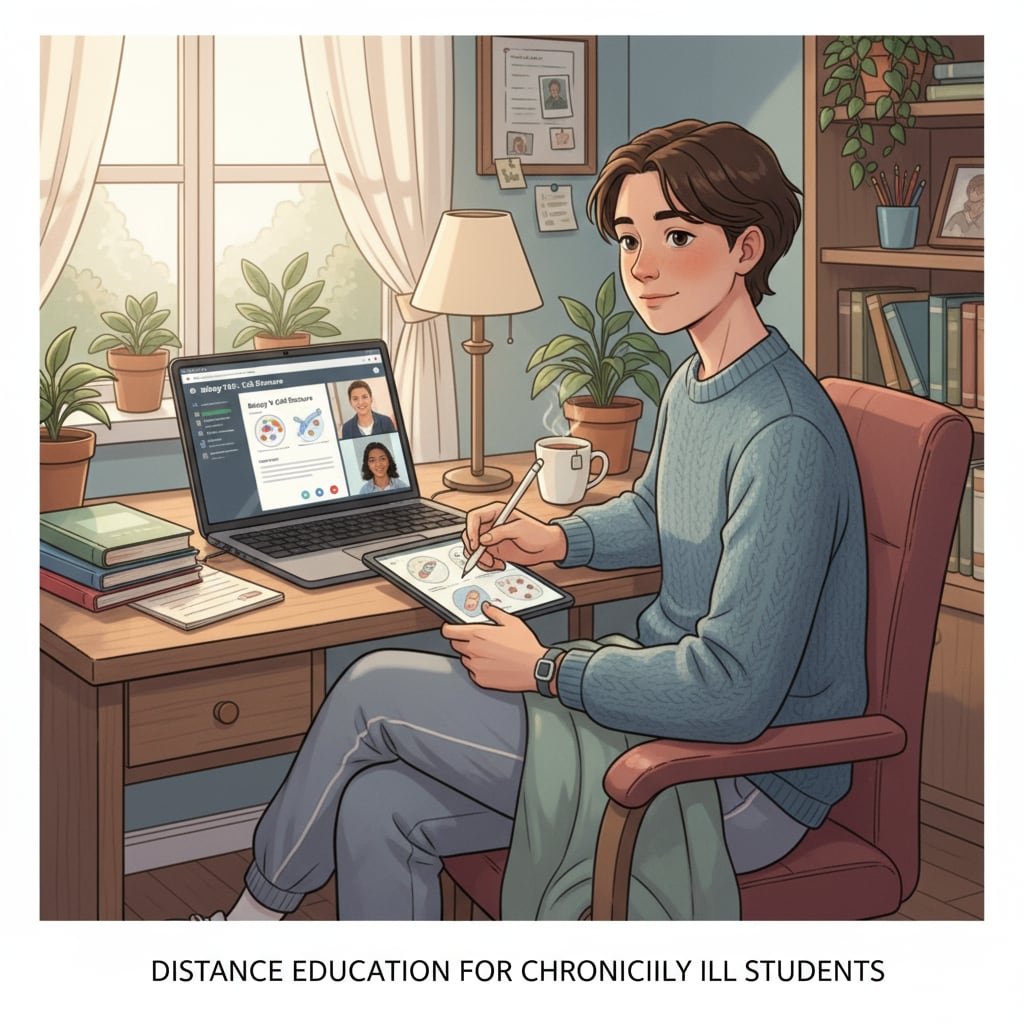Distance education, chronic illness, and school year repeat are significant aspects when it comes to the education of teenagers with chronic diseases. For these young individuals, traditional in-person schooling can be a challenge due to their health conditions. Distance education, however, emerges as a valuable solution, offering them the chance to keep learning without being restricted by physical limitations.

The Value of Distance Education for Chronically Ill Teens
Distance education provides several crucial benefits for chronically ill teenagers. Firstly, it offers flexibility. These teens often have unpredictable health issues, which may cause frequent absences from school. With distance education, they can adjust their study schedules according to their health status. For example, if a student is not feeling well one day, they can still participate in classes remotely at a more convenient time. This flexibility helps them keep up with their studies and avoid falling behind, thus reducing the risk of repeating a school year.
In addition, distance education allows these teens to learn in a comfortable and familiar environment. Being at home, they can be surrounded by family support and access to necessary medical care. This can significantly reduce stress and anxiety related to their illness, creating a more conducive learning atmosphere. As a result, they are more likely to focus on their studies and achieve better academic results. Distance education on Wikipedia

Key Considerations in the Application Process
When applying for distance education for chronically ill teens, there are several important factors to consider. The first is the curriculum compatibility. It’s essential to ensure that the distance education program aligns with the local educational standards and the student’s academic goals. Parents and students should research different programs to find one that offers the necessary courses and learning materials.
Secondly, the technological requirements need to be taken into account. Distance education relies heavily on technology, so the student must have access to a reliable computer, high-speed internet, and any required software or applications. Adequate technical support should also be available in case of any issues. Distance education on Britannica
Another crucial aspect is the communication with the school and teachers. Establishing clear lines of communication is vital for a successful distance learning experience. The school should be informed about the student’s health condition and the reasons for choosing distance education. Teachers need to be able to provide appropriate support and guidance to the student throughout the learning process.
Readability guidance: Each paragraph here is short and focused. Transition words like “firstly”, “secondly”, and “in addition” are used to clearly present different points. The passive语态 is not used, and sentences are of an appropriate length.
Implementing Distance Education: Practical Issues
During the implementation of distance education for chronically ill teens, there are some practical issues that may arise. One common problem is the potential for social isolation. Without the daily interaction with classmates in a traditional school setting, these teens may feel lonely or left out. To address this, parents and educators can encourage participation in online discussion groups, virtual clubs, or collaborative projects. This helps the students maintain social connections and develop social skills.
Another issue is the need for self-discipline. Distance education requires students to be more self-directed in their learning. Without the structure of a regular classroom, it can be easy for students to procrastinate or lose focus. Parents can play a crucial role in helping their children develop good study habits and time management skills. They can set up a dedicated study space at home, establish a regular study schedule, and provide support and motivation.
In conclusion, distance education is a powerful tool for chronically ill teenagers, offering them the opportunity to continue their education despite their health challenges. By understanding its value, carefully considering the application process, and addressing the practical issues during implementation, parents and students can make the most of this educational option and avoid the need for a school year repeat. This way, these teens can move forward in their academic journey and build a brighter future.


